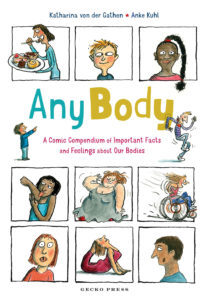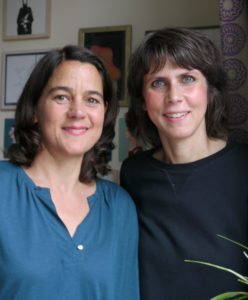 Katharina von der Gathen works in sex education with children and adolescents from a wide range of backgrounds. She lives in Bonn with her husband and four children.
Katharina von der Gathen works in sex education with children and adolescents from a wide range of backgrounds. She lives in Bonn with her husband and four children.
What was your main goal in writing/publishing this book?
I have noticed in my courses with primary school children that young, nine- and ten-year-old children are already critical about their bodies. Some want a six-pack and others talk about how they are too fat and need to go on a diet. I think pre-pubescent children should marvel at how amazing their bodies are. In the book, I wanted to focus on this great body-home that we live in, that we sense the world with and that is always changing in mysterious ways. It would make me very happy if Anke Kuhl and I inspire readers’ curiosity about their own and other people’s bodies.
Part of the material is based on a survey about how people think about their bodies – can you tell us more about this survey?
I conducted an anonymous online survey as part of the research for Any Body. The response really impressed me. Almost 2000 people filled out my questionnaire completely: all ages (from 5 to 80), all genders, queer and trans people, people with and without disabilities, fat, thin, tall, short, both critical of and content with themselves. The participants were very open. With my seven short questions, I suddenly had very private insights into countless individual body biographies. Some people wrote things they had never told anyone before.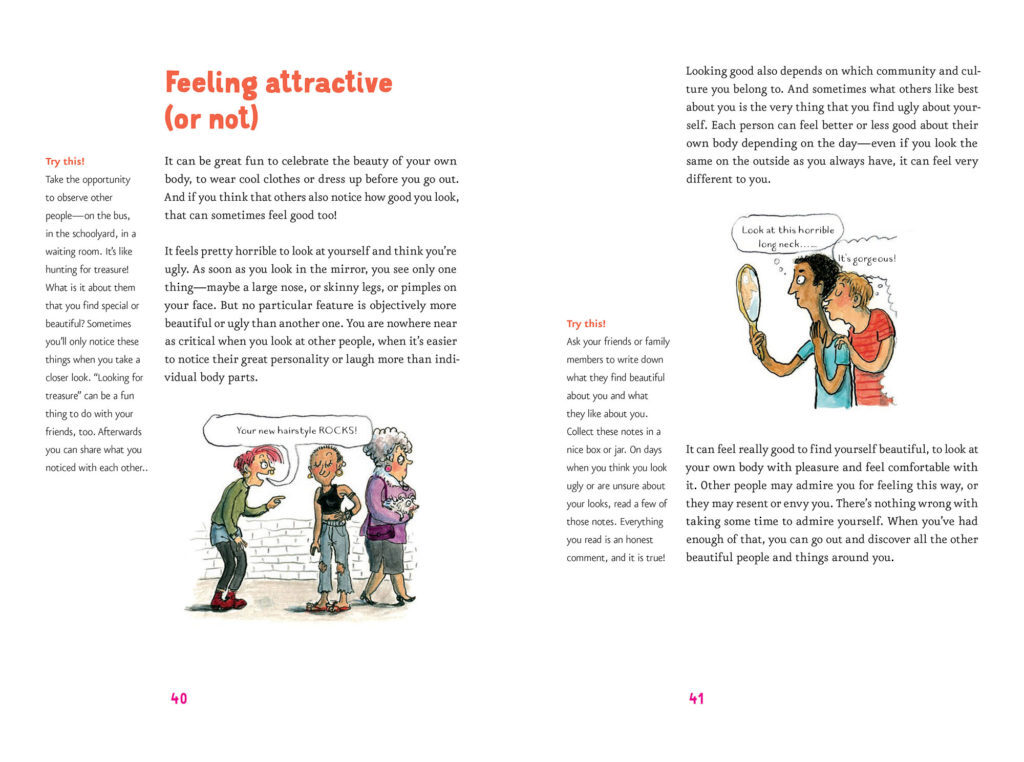
What surprised/interested you most about people’s answers in the survey?
I had expected some things: for example, that many women struggle with their body image. But what I didn’t expect was the extent of this body dissatisfaction—from all ages! Also, the shame that many women feel in public spaces (in the swimming pool, when dancing, on the bus, at school); how many women know they are of normal weight—and still feel too fat. Or, on the other hand, how many women are ashamed of their low weight and feel “unfeminine”. Men deal with countless body-critical issues too.
Very, very many people expressed a deep desire and longing to be able to accept and love their own bodies. Alongside this, I heard repeatedly from people involved in the body positivity movement. I had actually also expected (and also hoped a little) that older people would at some point become friends with their bodies and be relaxed with them. But even in old age, people don’t seem to have forgotten how to look critically in the mirror. A thoughtless remark about your body, cruelty in the schoolyard, disparaging comments from strangers—all these things leave a deep mark in people’s memories and thoughts. The body is a theme that stays with you throughout your life.
How does this book differ from your other books about sex and puberty?
In Tell Me, I answer the concrete questions children asked me anonymously in my teaching projects. It is about the physical changes during puberty, sexuality, pregnancy and childbirth, feelings and love.
Any Body has less to do with sex education. It is more fundamental and wider: an attempt to soften the judgmental and social media-influenced view, and shift focus to the uniqueness of each body.
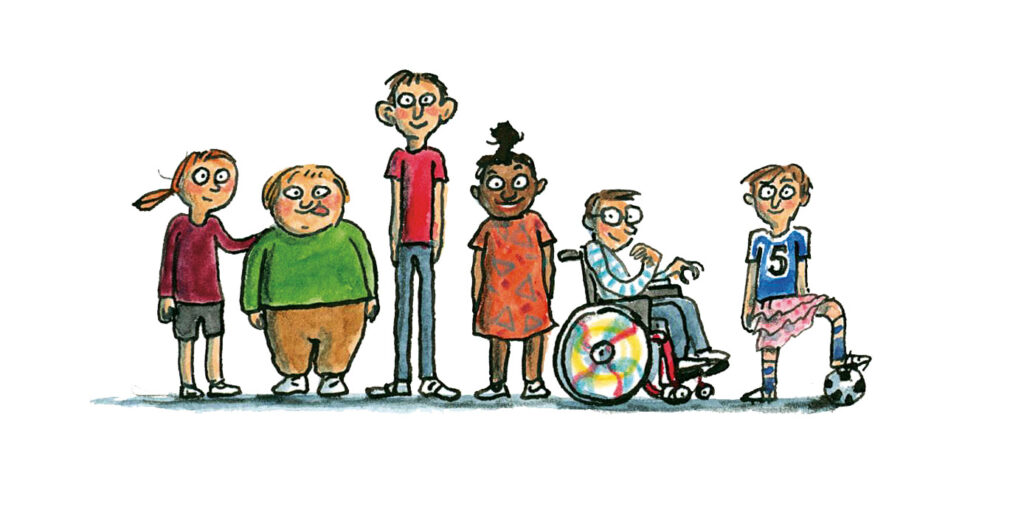
Anke Kuhl, is one of Germany’s leading children’s book illustrators, whose awards include the German Youth Literature Award in 2011. She lives in Frankfurt with her husband and two children.
Is drawing people different from drawing other characters, such as animals?
When I draw people, I want there to be a moment of recognition. Especially in Any Body, I wanted to draw as many people as possible that give you the feeling that you know them from somewhere. Someone once said to me: “I saw Gisela from Any Body in the supermarket the other day!” That makes me very happy. For me, it’s less about naturalistic representation than about capturing a person through facial expressions and posture.
It is very similar when I draw animals for fictional stories, except that there’s still a transference. The animals represent certain types of people. They can be just as diverse and, if I dress them in something, they can also be characterized by clothing. In non-fiction books like Do Animals Fall in Love? I do humanize animals too, but only in the depiction of the eyes and the gaze and the addition of thought and speech bubbles. My illustration is closer to lifelike in non-fiction like Any Body where I am drawing people.
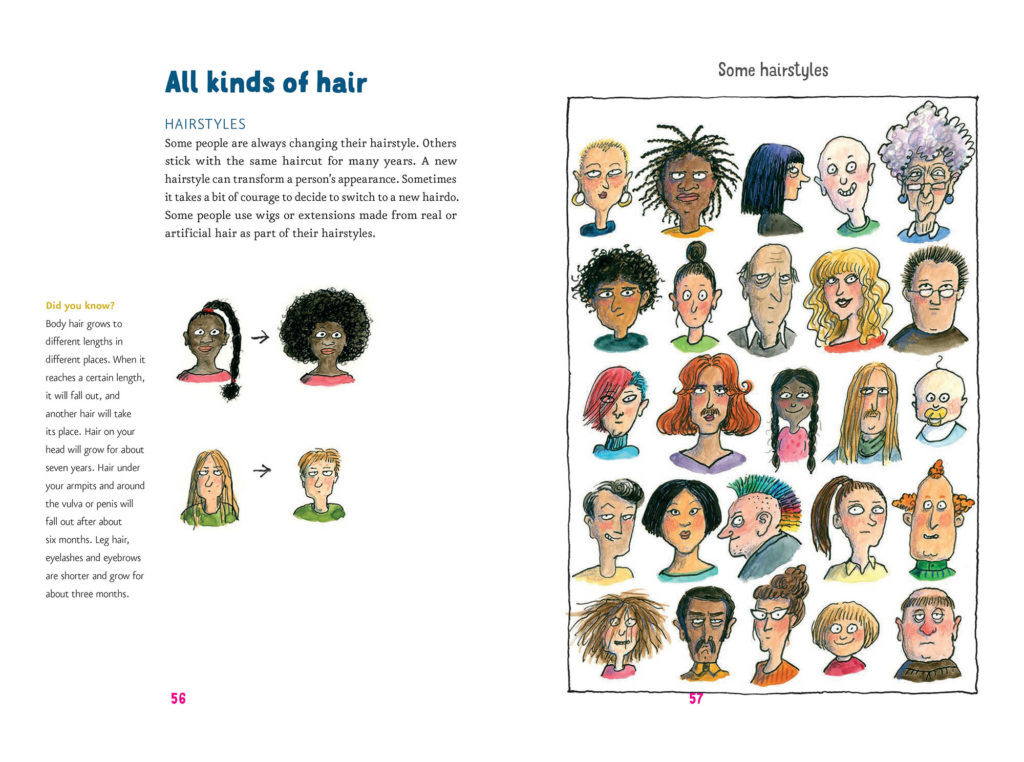 Do you draw from nature or from memory?
Do you draw from nature or from memory?
I always draw either from my head or from photos. If I want to depict certain movements or postures, or to recall a particular animal species, I look for a reference on the internet. Drawing from nature is a nice romantic idea, but unfortunately I can’t find the time for it day-to-day.
What role does humor play in your illustrations for Katharina’s books?
I really appreciate Katharina’s calm way of explaining things to children in a factual and knowledgeable way. We also share a passion for existential and somewhat “hairy” topics. It is important for both of us to take children’s questions seriously about these topics, but also to leave room for giggles and silliness. My drawings are often an outlet for this. I hope they complement the texts with humor and wit, and so bring a good pinch of lightness.
Any Body – A Comic Compendium of Important Facts and Feelings About Our Bodies is available May 2023 from all good bookstores and on our website. Humor combines with accurate, digestible information in this honest comic reference for children and early teens who want to understand and feel at home with their own bodies.
